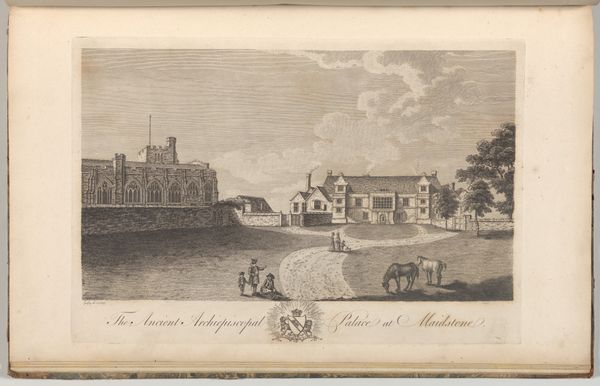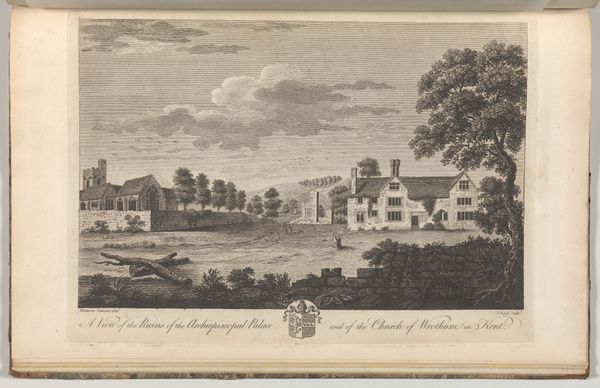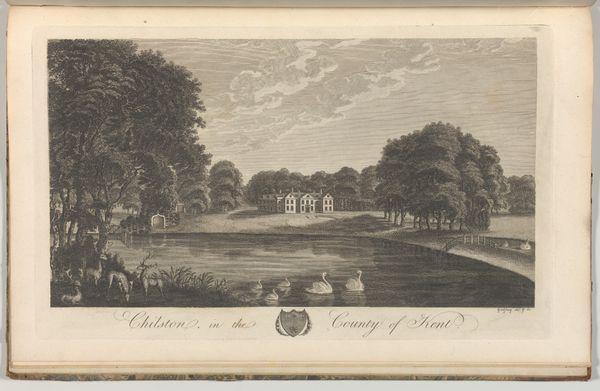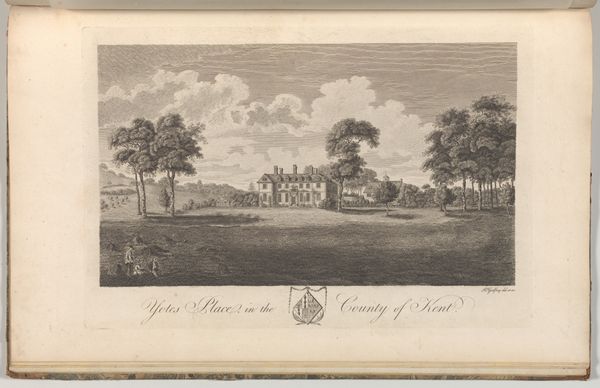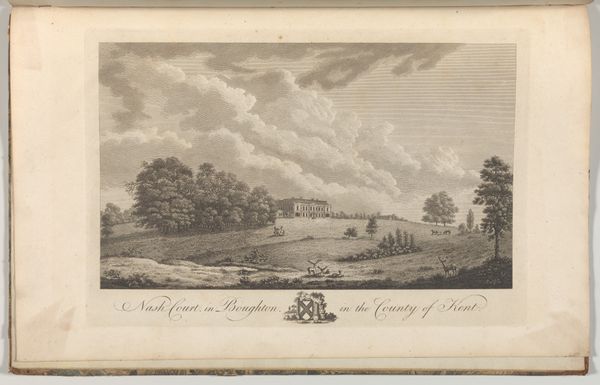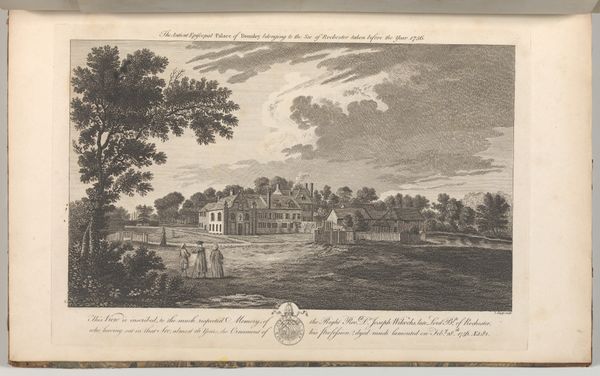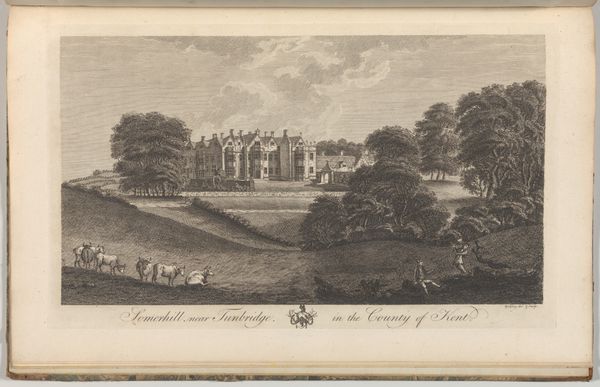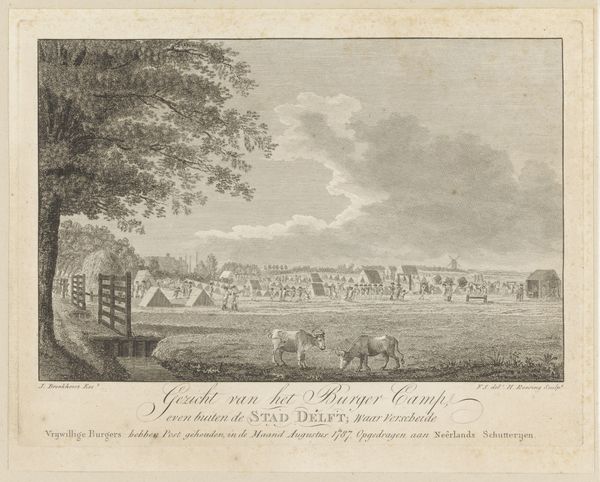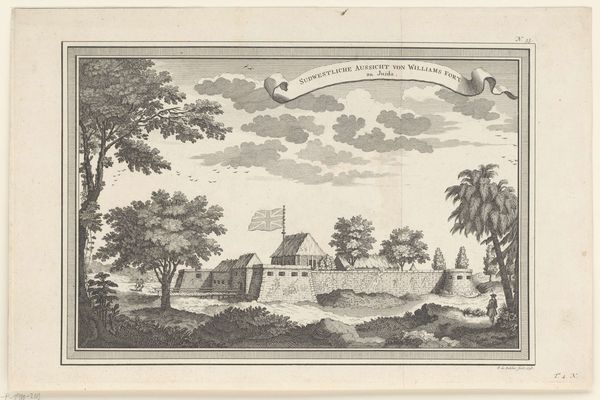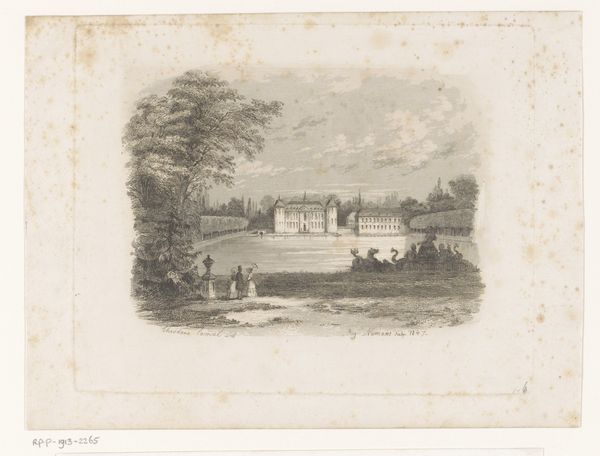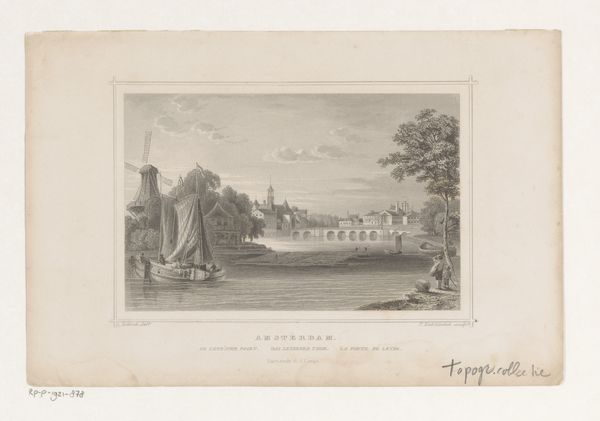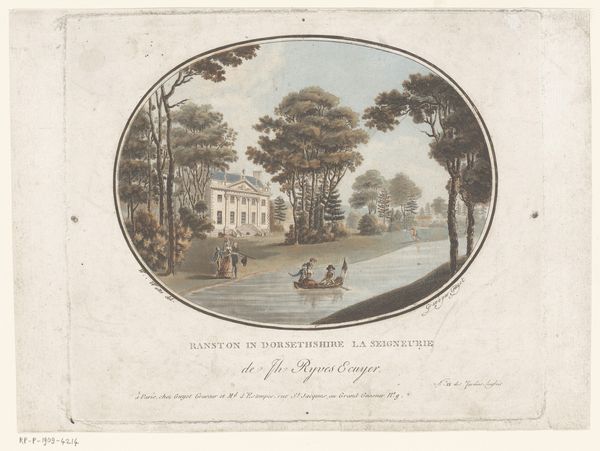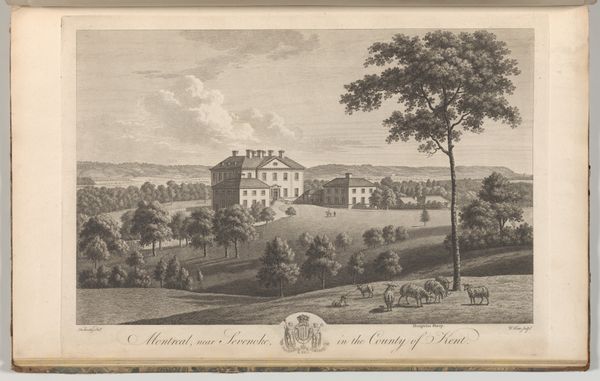
Nash Court in Boughton, in the County of Kent, from Edward Hasted's, The History and Topographical Survey of the County of Kent, vols. 1-3 1777 - 1790
0:00
0:00
drawing, print, etching, paper, pencil, engraving
#
drawing
#
neoclacissism
# print
#
etching
#
book
#
landscape
#
paper
#
pencil
#
cityscape
#
genre-painting
#
history-painting
#
engraving
#
building
Dimensions: Book: 17 5/16 × 11 × 13/16 in. (44 × 28 × 2 cm) Sheet: 16 15/16 × 10 5/8 in. (43 × 27 cm) Plate: 10 1/16 × 14 in. (25.5 × 35.5 cm)
Copyright: Public Domain
This is an engraving of Nash Court in Boughton, part of Edward Hasted's "The History and Topographical Survey of the County of Kent." Though the artist remains anonymous, the print offers insight into the landed gentry and class structures of 18th-century England. The image presents an idealized view of rural life, emphasizing the harmony and order associated with the English countryside. However, this serenity obscures the labor and social inequalities that underpinned such estates, obscuring the lives of those who worked the land. The architecture and manicured landscape symbolize power and privilege. What we see is not only a house but a representation of social hierarchy. Consider what is included and, perhaps more importantly, what is left out of the frame. How might this image reinforce certain narratives about English identity and history, while marginalizing others?
Comments
No comments
Be the first to comment and join the conversation on the ultimate creative platform.
